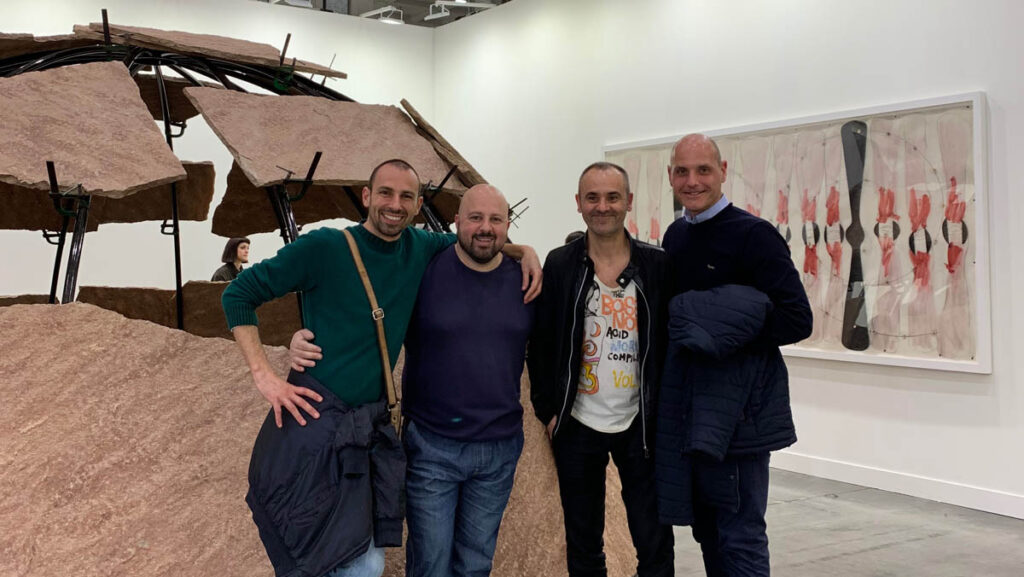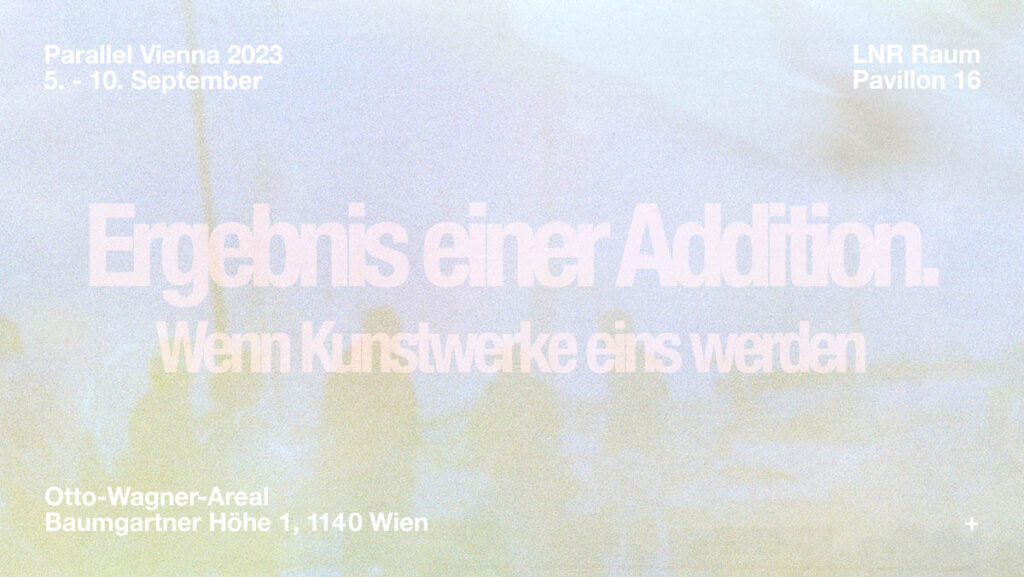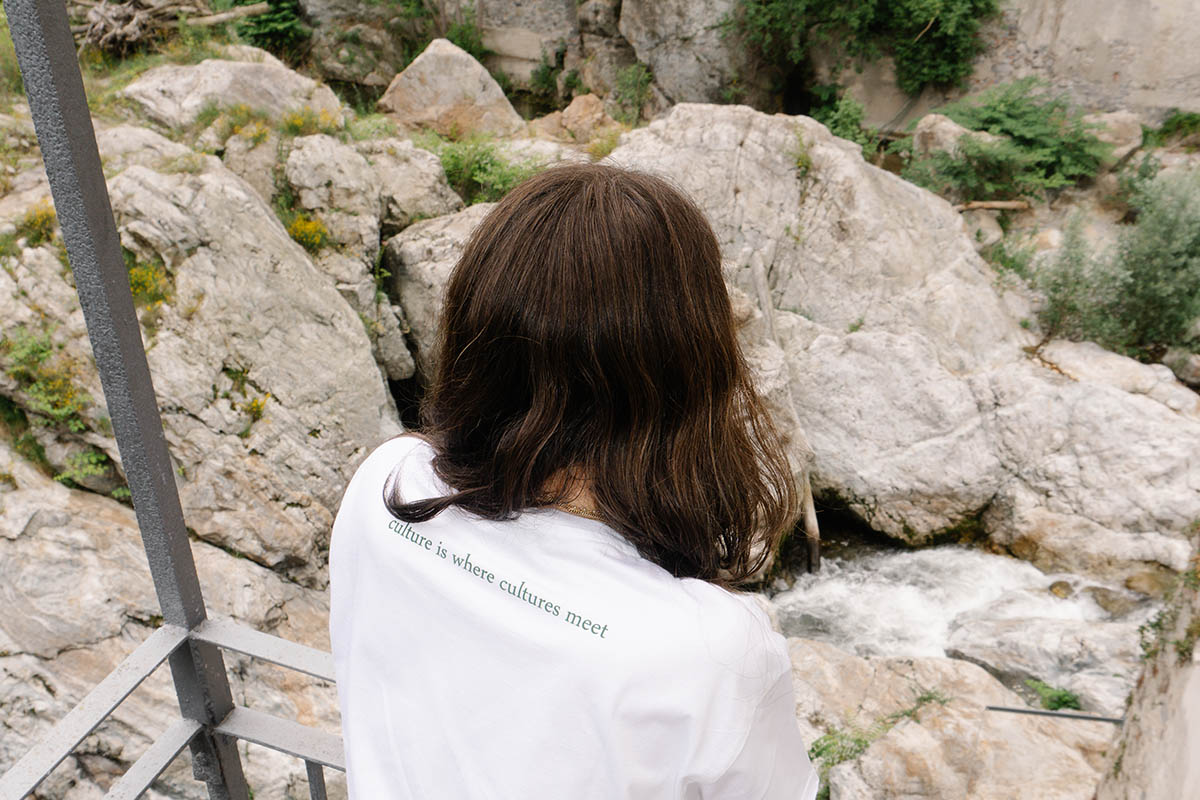
Broglio’s paintings are full of details, inhabited by various types of animals from adorable dogs and special birds to pigs and tigers. Then household elements of different kinds of cultures, all placed in bourgeois apartments. A watering can, an umbrella holder made of mouth-blown glass perhaps or a fashionable plastic material, geta flip flops, a fragrance dispenser, Aperol spritz glass, and a PlayStation controller.
Nevertheless, in the last two years, a whole body of work has been emerging. The more I scroll to now, the more faces of people appear. Now they are obvious, even though looking like flowers.
Erka Shalari: What importance does your studio have for you and how do the studios that you had till now differ from each other? Which has been your very first studio as an artist?
Lula Broglio: My first studio was in a back room at Spaziobuonasera, an artist-run space I had set up with some of my academy fellows. It was always a great mess since it was the hangout spot with friends. It was funny, but then over time, I decided to change and rented a pretty big studio in Barriera di Milano (Turin). It was a 100 square meter space with big windows and a friend’s studio bordered it, and to avoid paying double bills for electricity, we decided to dig a nice hole in the wall and run a very convenient extension cord through it. With the help of that extension cord, I illuminated my days in the studio for two whole years, but it was always too cold because of the large old windows, so I decided to try to make my own studio at home. It was a revelation. Painting at home is perfectly suited to my practice. But then I moved and had to change everything.
Now I live in the mountains, where everything has its own time and the landscapes seem to be rarefied and suspended in time. We drink ancient water without realizing it, and by looking up at the mountains, we see our future melting little by little. In my studio, which is only a few minutes walk from my home, we heat and cook with wood. It is a very peculiar place – being an apartment located inside a former wool mill, in fact, it was used by the people who worked there. So I am inside a huge, partially abandoned skeleton, an industrial shed gone to ruins. When the sun sets, only two lights are lit in the whole areal: mine and that of Silvano, a farmer, the only neighbour. The apartment overlooks Cervo Creek, and when I paint, I listen to the clash of water with masses of boulders. You can hear real roars. Working so close to the river has definitely influenced my work. In fact, the fluidity of the bodies reminds me of that of water. I also have another studio in the old part of town, it is not very big, and I use it more as a storage room, but since it is well-heated, I often go to paint there when it snows. It is very nice because from the the window you only see cypress trees and when it starts on snowing they become almost unrecognizable, reminding me of ice cream cones.
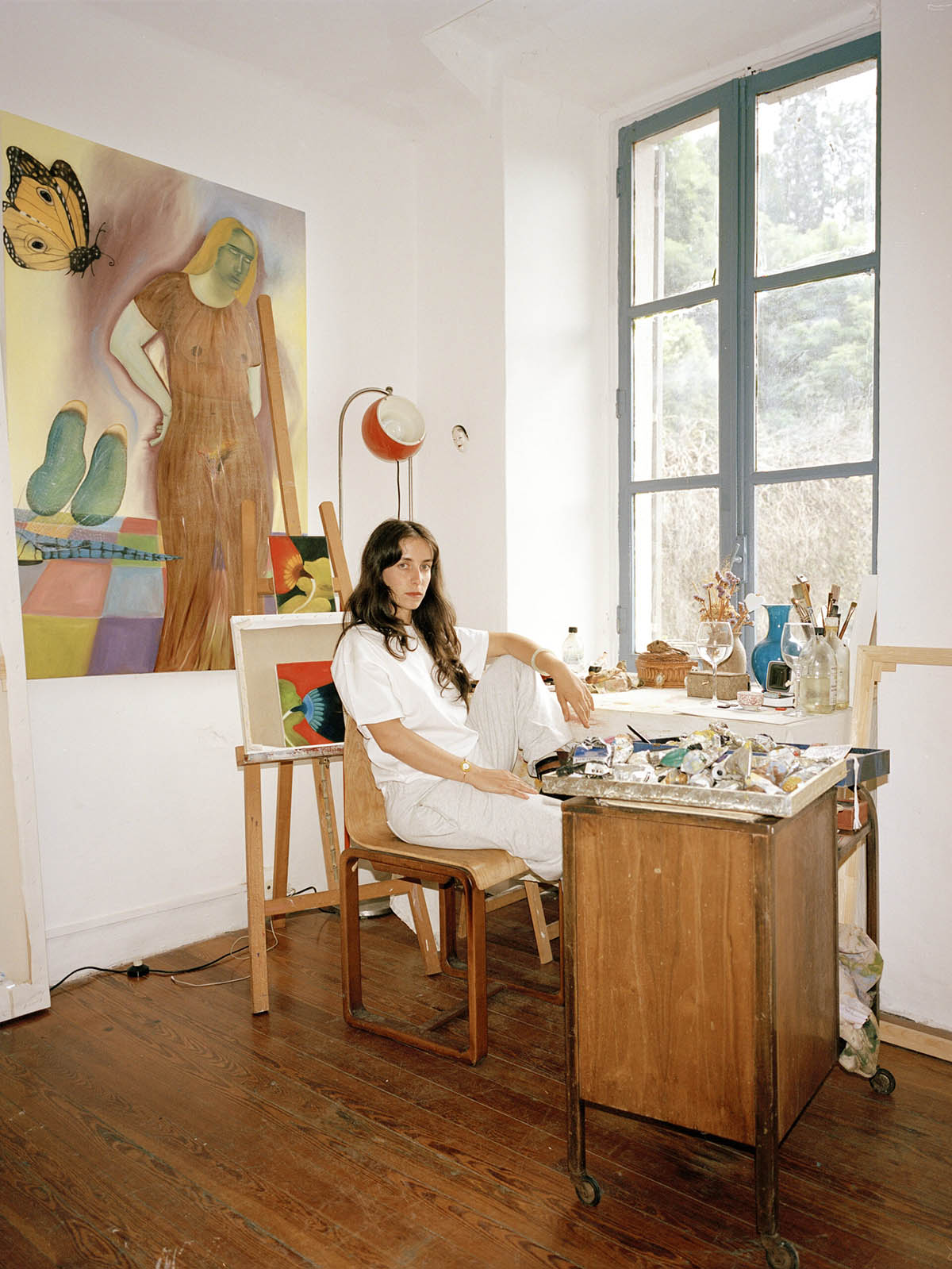
How much time do you spend in the studio?
I usually stay in the studio from early morning until the evening around 6 p.m. But I don’t have fixed hours. At times, I leave the studio late at night, other times I go very early in the morning. I always have lunch in the studio; for too long I have been eating jacket potatoes and vegetables cuz it’s a quick recipe when you have a wood stove. You roll the potatoes in foil and throw them in the coals and leave them there, you can even bypass them for a while. Then when you’re hungry, you open the glowing package, add a slice of cheese or squash, and you’re happy.
The studio has always been very important for my practice, I have to go there daily. I have to have a comfortable place to work well, as I really spend a lot of time in here. I wake up early in the morning because I like it, and at times I am at the studio already at 5 o’clock and enjoy the sun’s rise. I am going to change place soon, I will move to an old rock farmhouse in the mountains, always near the creek and with a big forest, it will be a home studio though.
I am looking forward to it!
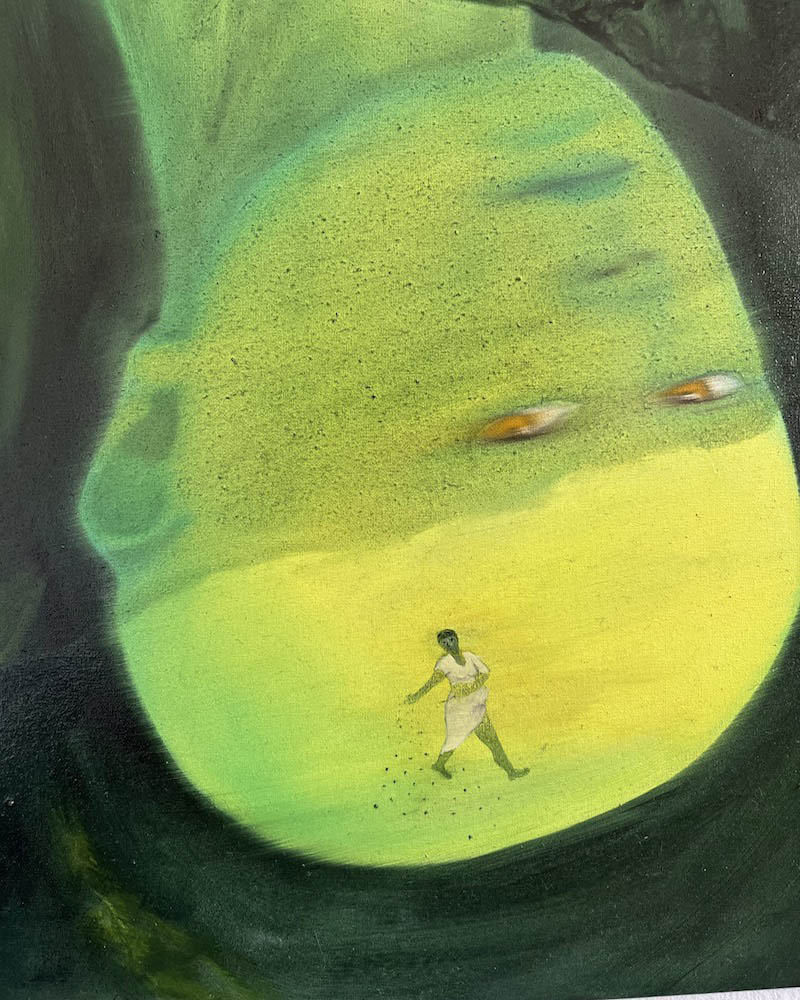
Left: Lula Broglio, Years, tears, 2023, oil on canvas, 50×50 cmRight: Lula Broglio, Clorofilla, 2023, oil on canvas, 45×45 cm. Photo: Lula Broglio 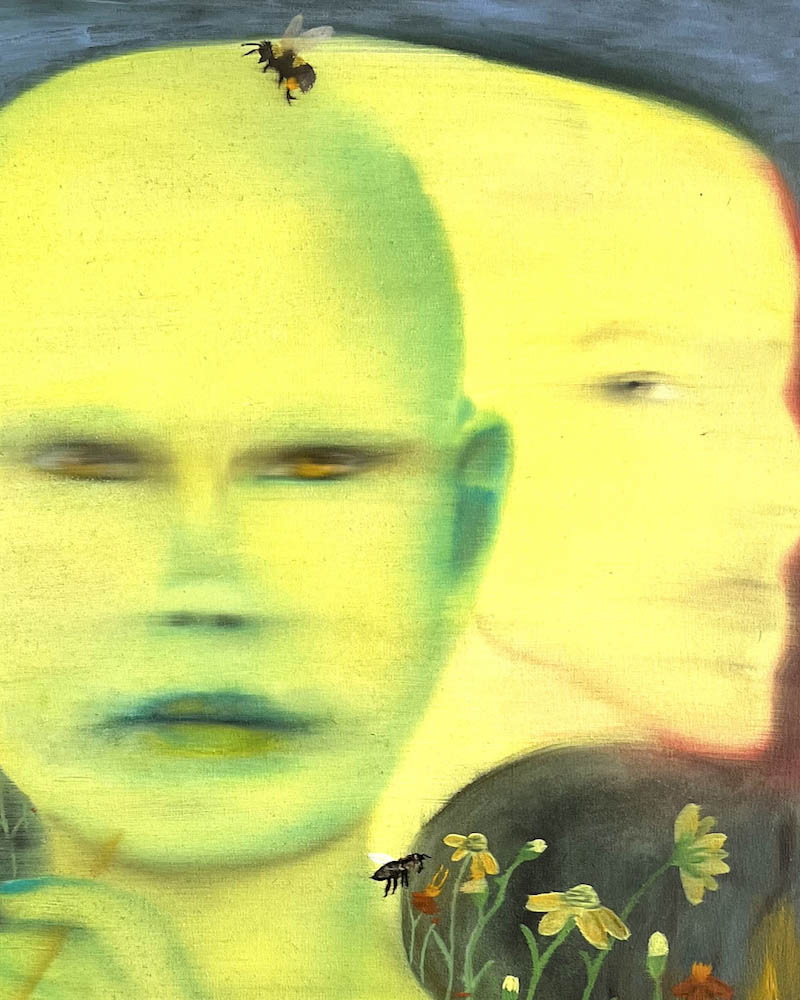
Right: Lula Broglio, Clorofilla, 2023, oil on canvas, 45×45 cm. Photo: Lula Broglio
In parallel to working as an artist, you have been over the years co-founder of several art spaces: Buonasera, Club Pineta, Marcello Bellone Foundation. What is the thing you love most about curating and what were these places like?
I’ve always enjoyed working with other artists, curating and organizing exhibitions of others. For a while, I curated other artist’s exhibitions at Spaziobuonasera to then start with my owns. It was good training! Spaziobuonasera was our training ground, then in parallel with Francesco Snote, we opened Club Pineta, a goliardic, easy, and unpretentious situation, a way to get together with other artists friends, musicians, poets, writers, actors, curators, and so forth.
Club Pineta always took place in summer at the sea, it was like a summer rehab where you didn’t impose precise programs, you had to live it as a vacation.
Marcello Bellone Foundation, on the other hand, was opened out of the love of Marcello Bellone, an elderly mountaineer and collector, eclectic and passionate about art. With Marcello, we crossed each other’s paths during a mountain hike, we were over a ridge and I was suffering from vertigo, he kindly reassured me. Within a short time, we got to know each other better and became friends, and so we decided to open his foundation with the goal of promoting and supporting also emerging artists. Unfortunately, we have not seen Marcello for some time because of medical reasons – he is now obliged to live by the sea on the French Riviera to benefit from the salty air.
How do your subjects in painting emerge – humans, animals?
Working so high above the river has definitely influenced my work. The people portrayed in my paintings are very strong or fragile or bored or shy people. Sometimes they simply observe us, other times they play strange games or partake in rituals. Often, there is also a sense of duality in who they are. Frequently, the protagonists go through identity and relational conflicts. Sometimes when I cannot remember the faces of interesting people, I’d browse around for hours on this-person-does-not-exist.com, looking for emblematic human features, which then don’t actually exist. When I portray a person, I try to highlight the fluidity of the personality, in all its desirable and undesirable traits. I like to imagine that the characters in the paintings, the nudity and autonomy are simply facts, so obvious that they hardly deserve consideration. Faces remain blurred not because they matter less, but to differentiate themselves from the rest of the body, like Mary Wigman who appears „transfigured“ because she wears a mask to dance. The mask becomes the threshold to an irrational sphere just as the blurred face does in painting. I have always been fascinated by her dance and the movement of the body.
When I paint, I look for images and investigate the sensations that have stuck behind my eyelids and have remained in my consciousness. I paint beings that take the form of the containers of the universe, redeeming of nature and the human body. Whether they are the third gender or women or men is not important, they are gateways between the third sex, the feminine, the masculine, and nature, between the outer and inner worlds. The porcelain skin and the rosy nipples are gone, the narrative is skinned down. Paradoxically, I always painted exterior sets and richly detailed interior scenes where the few humans who lived there were both pale and never looking toward the viewer. The scenes were above all, inhabited by animals or ghosts, I have long investigated the perception of humans in space but without making them protagonists in the representation. Now the people are obvious, they are like flowers looking at us and are born from the earth. They are not detached from the soil, they are simply part of it.
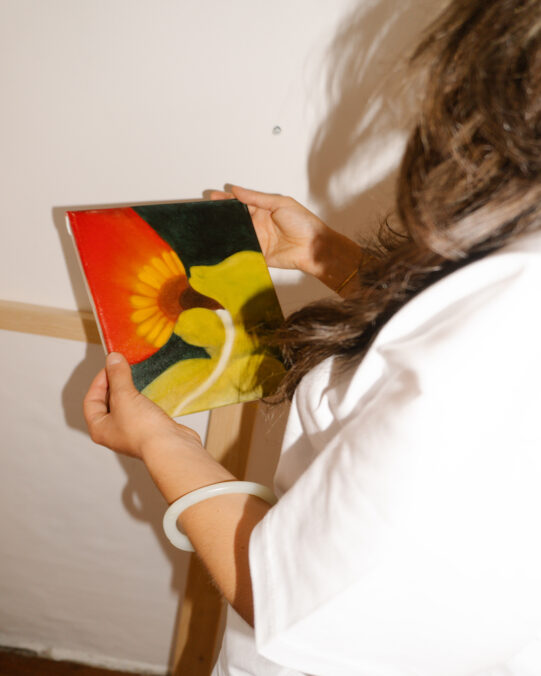
Lula Broglio
Continue your thoughts.
T.J. Demos proposes a vision of decolonization of nature, inviting to stop considering the non-human world as objectified and passive. On the contrary, it suggests embracing a biocentric interaction between human beings and the environment, thus proposing an ecologically sustainable and equitable social system, in which man is not only „in contact“ with nature, but is an integral part of it. Starting from this concept, I am working on a new body of work entitled “ Noisy Chlorophyll“. The new paintings have an expression of an inclusive and queer nature, highlighting its intrinsic density of contradictions and paradoxes. This ecological representation will stimulate a critical reflection on what is traditionally considered „natural“. The figures represented will not be linked to a specific sexuality, they will have childish features, be androgynous, and only one breast to breastfeed.
Potential changes in the bodies during the process of life and the migration of the soul after separation from the body will be highlighted. The people portrayed will be one with other living organisms, such as animals, plants and fungi. This symbology emphasizes the deep interconnectedness and interdependence between all life forms in the ecosystem.
„Noisy Chlorophyll“ is also a conceptual homage to Rachel Carson’s „Silent Spring.“ The latter addresses the silence enveloping spring fields due to insecticide use. It refers to the evident and metaphorically loud movement of nature in addressing the current environmental crisis. The term „Chlorophyll“ symbolizes nature’s chaotic resilience and the thinking if there is chlorophyll there is Vitale energy. The concept of noise in the title doesn’t refer to physical sound but rather to significant ongoing change.
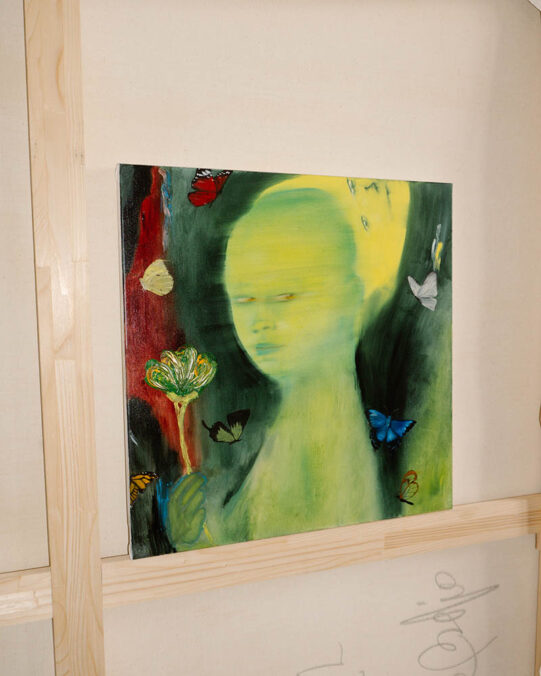
Lula Broglio
Do you start to work directly on the canvas or through drawings?
I work directly on the canvas; I don’t use drawn sketches. I have a notebook that I use to make „written sketches,“ I write down what I would like to draw and the colours I would like to use, whether I should add oils or dry work, or whether I should add some pumice stone. I write down a lot of things, but in the end, I almost never follow through with what I set out to do. Drawing then is a separate practice.
How important are titles to you? Thinking of paintings or titles from your solo exhibition, such as Entusiasmo rituale, Fiammiferi stanchi, Another Crying horse, Barche Solari (Ritual Enthusiasm, Tiresome Flames, Another Crying Horse, Solar Boats).
I usually put a painting with its back on the wall and give it a title. They are important to me though it also depends on the period.
What is the most unorthodox place you have had an exhibition and what would be a place you would like to exhibit?
Inside an empty swimming pool. Any place is plausible, it all depends on the circumstance.
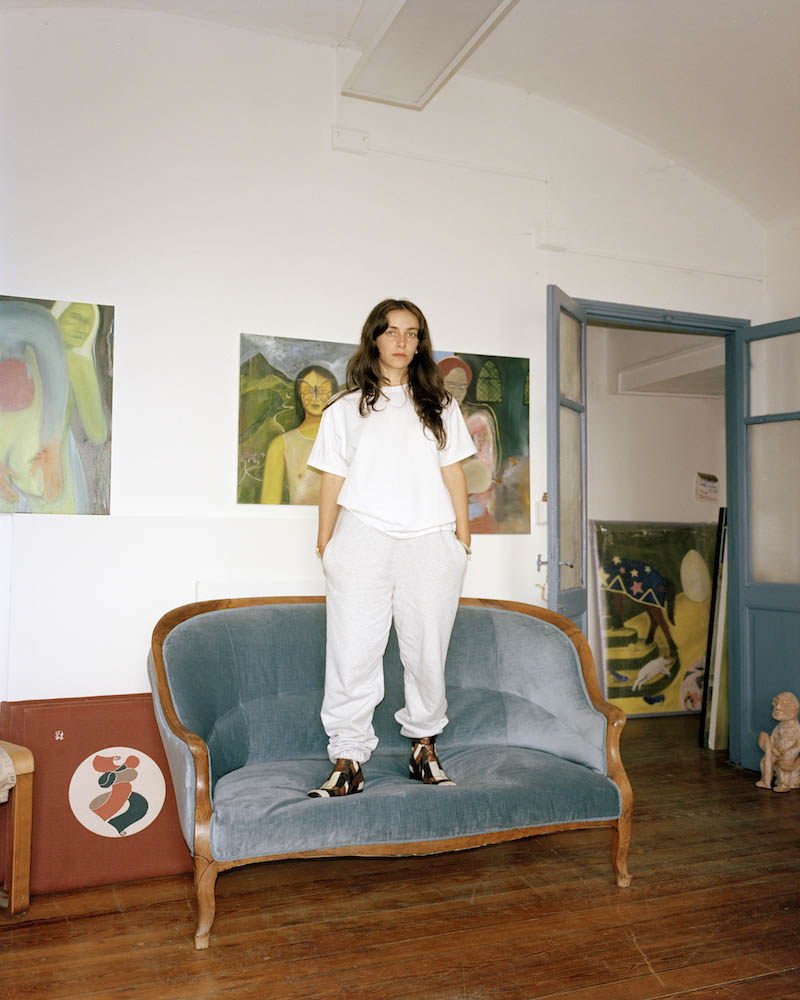
lula broglio
You tell in an article to ATP Magazine, „For these reasons, I have begun to impose a new routine on myself: walking the downtown streets at night, possibly during the week so that I feel more alone, with the aim of acquiring the same attitude that a ghost might have.“ Do you do this ritual anymore? If not, you could tell about some new ritual that you fell in love with or happened to you.
I still do this ritual, but not where I live now because I would be in the middle of nowhere and I like to see the nocturnal wildlife, the people but especially how the light illuminates the architecture, I can’t explain why. Just last night, I was walking around Sanremo, the seaside town where I was born, around 2 a.m. I was still not sleepy, so I walked around a Casino. Slot and smoking room. There are a lot of lights there, a lot of impulses, a lot of people drinking and smoking, all well-focused on one goal. When I am not in town, I walk in the mountains and it is a „ritual“ that has now become fundamental to my practice. When I am in Biella, I go every day to walk in the woods. When I have more time for a long walk, I walk by heading up into the high mountains.
Do you enjoy writing?
I enjoy writing and reading, reading and writing. I would like to do it more.
You have been living and studying in Turin. Which are some of your favourite places?
Al Jazira a Moroccan restaurant in Porta Palazzo, Barriera di Milano, the Egyptian Museum, the Sabalpina Gallery, The „Tout va la nuit“ nightclub in Via Rossini, Mulassano, the Consolata herbalist shop, the dolphin bar at Carmen’s on Via Sant’ottavio, the Royal Gardens, the Porte Palatine.
Lula Broglio – www.instagram.com/lulabroglio



